EAST MIDTOWN
(east of 6th Avenue, between 34th and 59th Street)
New York is the only real city-city.
(Truman Capote)
The business centre of the city – or rather the world. Office buildings, television studios, expensive stores, hurried businessmen. It’s throbbing with life. East Midtown has plenty of skyscrapers. The word skyscraper was first used in 1890 by a gentleman from Chicago, John J. Flinn, to describe the new building style. There was a close race for the tallest building for long time between New York and Chicago, but recently Asia and the Arab countries joined in and overtook the original pioneers. New York was first for a long time. The Flatiron Building, which was finished in 1902, is considered to be the first skyscraper. In 1913 the 60-storied Woolworth Building became the tallest, and later the Chrysler and then the Empire State Building. The next champion was the World Trade Center after which Chicago led with the Sears Tower until 1998. Currently the world record holder is the Burj Khalifa and New York’s record belongs to the One World Trade Center. The style kept changing over the decades. First the goal was to build as high a monstrosity as possible to fit the most offices. Nobody cared if the new building took the sunlight away from its neighbours. Later the city regulations stipulated that above certain height the buildings be built with gradual decrease in width. That’s the reason for the ten tiers on top of the Empire State Building. However, there is still no limit on height.
One of the city’s symbols, the Empire State Building, is on the corner of 34th Street and 5th Avenue. It’s not that easy to locate. Even though it’s visible from everywhere in the city, once you are close you can be searching around in vain. Day after day, puzzled tourists are asking how to get there while standing at the bottom of the building. Once we find it, the next hurdle is the queueing but we can avoid some of it by buying the tickets online. If not the tickets, then at least there will be some waiting time at the elevators. But no need to stress, sooner or later everyone will reach the top and the view will make up for all the hassle.


This miracle reaching the sky is 436 metres tall and its residents are carried up and down via 73 elevators. Other statistics: 60 thousand tonnes of steel, 6,500 windows, 10 million bricks. The top thirty floors are illuminated at night, sometimes with special colours. For example, at the introduction of Windows ’95, it was lit in Microsoft colours. The Hungarian construction industry should take note of the construction speed: the skyscraper was built in 9 months – pre-fabricated panels were used to build 4 floors weekly! The building work started not long after the stock exchange’s collapse and it opened in 1931. They had such a hard time finding tenants that it was called Empty State Building for a while. It was saved from going bust by its viewing terraces.
Two advice: before taking a deep breath and getting into line, have a look at the board by the ticket counter that tells about the visibility on top. It can be very frustrating to reach the top after hours of standing in line and cannot even see the tip of your nose. It’s also worth to think about the time of day. I think the best is to go up an hour before sunset because then you have a chance to look around in daylight, admire the sunset and finish the roll of film with a few night shots.
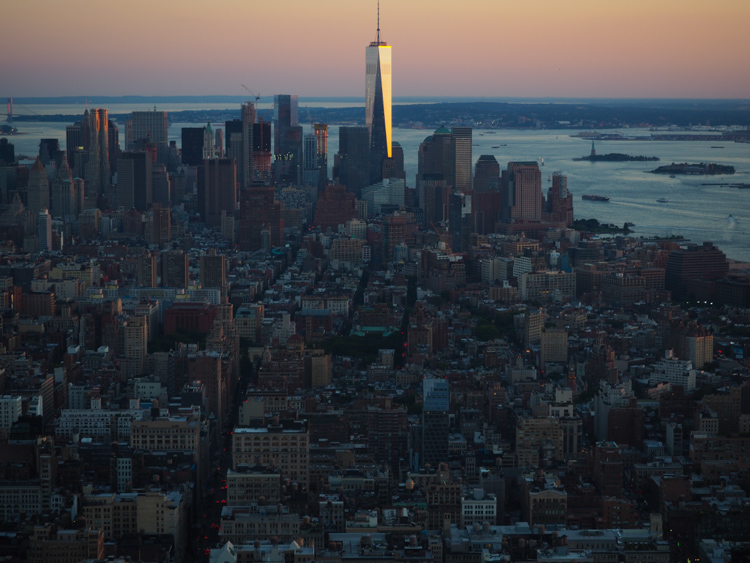
The tower appears in numerous movies, like in the final scenes of Sleepless in Seattle or in King Kong.
There are better conditions for photos on the open circular deck on the 86th floor than at the 102nd floor enclosed viewing area. Earlier you could walk up the almost 2000 stairs, but now only the express elevator is used to take up the visitors.
The Morgan Library and Museum (corner of 37th Street and Madison) was reopened in 2006. To house the private collection of Pierpont Morgan, a banker, a magnificent building was designed in 1902 in the style of Italian palazzos. The collector’s son opened one the world’s best book, manuscript and prints collection to the public in 1924. The collection originated with Pierpont Morgan’s father, with one valuable letter he received from George Washington. When Pierpont Morgan died in 1913, his library was the whole of America’s largest and most valuable private collection. For example, here is one of the 11 remaining copies of the Gutenberg bible from 1455 printed on parchment. Also interesting, that in 1882 Thomas Edison’s electric light was first installed in this residence. Other wealthy families soon followed Morgan’s example and eventually the electric light conquered the whole city.
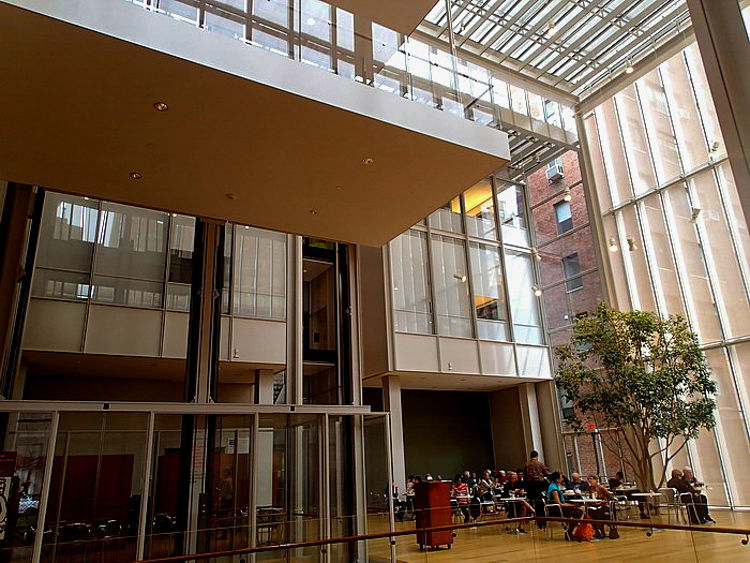
The next mandatory sight is the New York Public Library (on 5th Avenue, between 40th and 42nd Street).

The huge building, a few blocks away from the Empire State Building, was built in 1911. There are loads of young people sitting on its stairs on sunny afternoons in the company of the two stone lions. Even if you don’t feel like reading, it’s worth walking around the halls, they have a lofty atmosphere. The prettiest is the two-block long reading hall where in earlier times visitors buried their heads in the books by the light of lots of little reading lamps. Now instead of lamps computer screens flicker. Below the hall there is a 140 km long shelving system with more than seven million books. Thanks to the computer system, books can be located in the 8-story storage in a few moments. No book can be borrowed here, there are eighty branch lending libraries for that purpose.
On a side note – there is a Munkacsy painting in the Edna Barnes Salomon reading room. It is the “Milton” which won gold in the World’s Fair in Paris.

In 2021, a new exhibition opened in the building of NYPL, the “Treasures”. Among the various valuable memorabilia you can find the stuffed animals which inspired the Winnie-the-Pooh tale series.
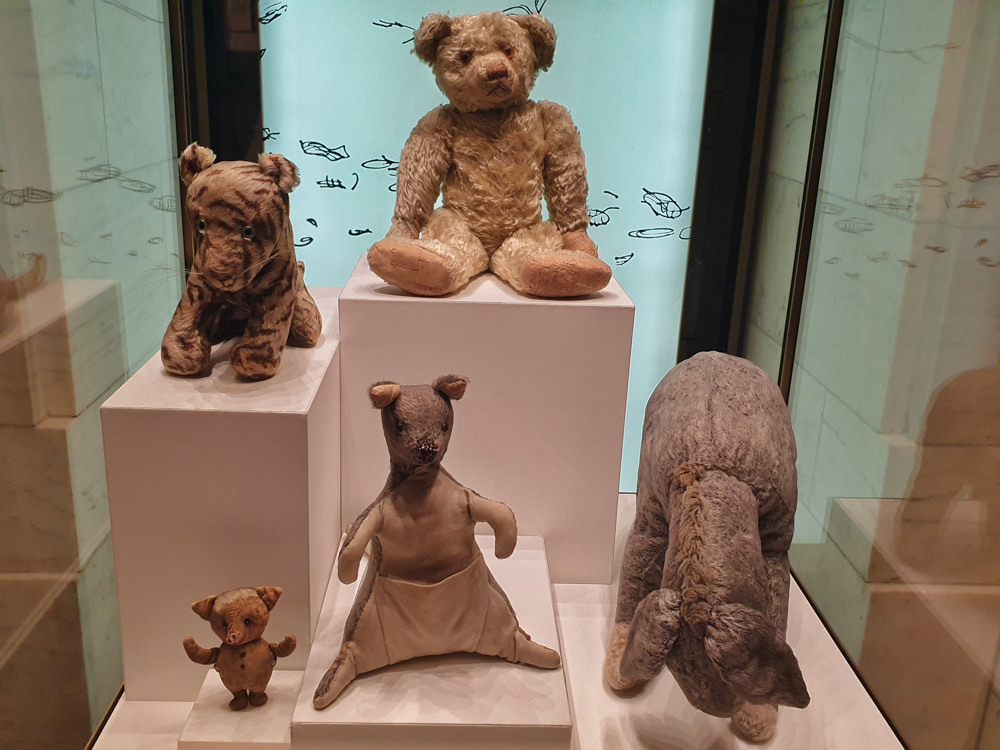
The only free iceskating rink of town is in Bryant Park, where the libary is located. You do not have to pay for the use of the rink, only for skate-rentals.
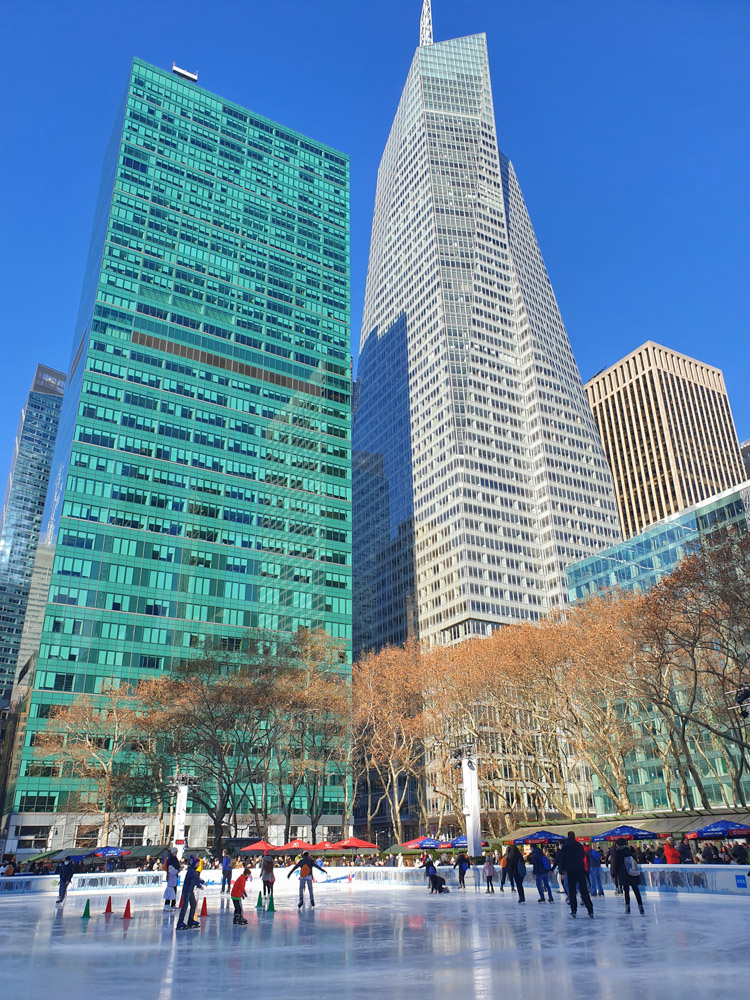
Also, you should walk to the Stavros Niarchos Foundation Library building on the corner of 5th Avenue and 40th street and take the elevator to the top floor. There is a cafe with a free rooftob bar and top views.
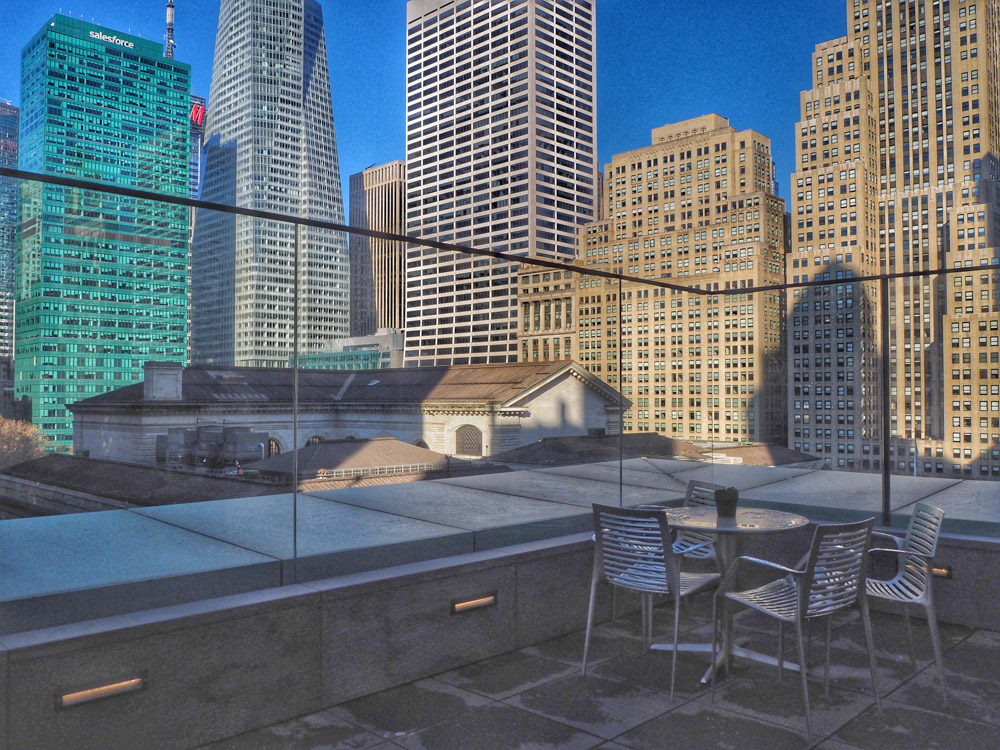
It’s worth taking a short detour north and look inside the Fred F French building (521 5th Avenue) where Middle Eastern, Ancient Egyptian and Greek styles are mixed with Art Deco. In the entrance hall there are 25 gold covered brass doors under the richly decorated ceiling. An interesting fact about the construction that this was the first one where they employed Native Americans from Canada because they didn’t have fear of heights. Soon they became sought after scaffolders and later worked on several of the city’s skyscrapers.
Going two blocks east, we end up at the main train station, built in 1913. The Grand Central Terminal (42nd Street, between Madison and Lexington Avenue) is one of the most beautiful in its style, a masterpiece of beaux arts. Dozens of art photos were taken in its atmospheric central hall.
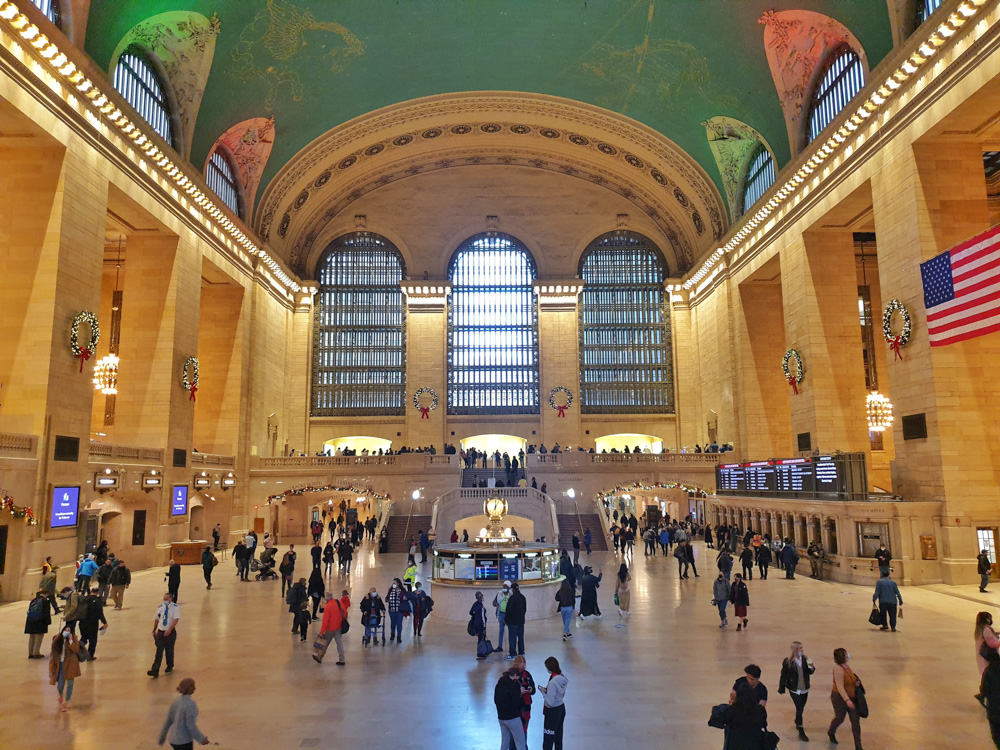
The best is to walk up to the galleries from where you can admire the lovely chandeliers, paintings and the beehive like crowds downstairs. There is a guided tour daily at 12:30. There is also an audio tour available. Every day between 9am and 6pm, you can rent a six-language audio guide at the “GCT Tour” windows in the main hall (this is a lot cheaper than the guided tour). Like lots of other buildings, this was also set for demolition to be replaced by a new office building. However, like in some other cases, the people of New York saved it. Among others, Jackie Onassis defended the building, which became listed in 1987. Its staircase was modelled on one of the Parisian opera houses, which hints at the golden age of train travel.
The station is full of little interesting details, for example, the clock from 1913, which is above the information counter, and only late by a second every 1.4 million years so you can safely set your watch to it.

Amongst loads of eateries at the station, the most famous is the yellow tiled Grand Central Oyster Bar. There are lots of varieties of very fresh oyster at this place. It opened the same time as the station in 1913 and has always been popular. Left of the entrance are the more elegant tables with white table cloth, to the right are the wooden benches and further inside you find the not too fancy, pub like area. The waiters are not very friendly or polite but there could be no complaints about the oysters. The daily offer (where the oysters are from) is always displayed on the wall.

Earlier, the statues on top of Grand Central could gaze all the way at Park Avenue but in 1963 the Pan Am Building was erected behind the station which blocked the view. The giant office tower caused a huge outcry at the time. The 59-story building now has the Met Life logo on it but is still called Pan Am. When Pan Am airways was formed in 1927 it had Charles Lindberg, who first crossed the ocean alone in a plane, advising them on routes. They started the first Pacific Ocean route in 1936. There used to be a helipad on the top of the building but it was closed after an accident that killed five people. According to surveys, MetLife is the most hated building in the city – if New Yorkers could only demolish one building, this would be it.
The One Summit viewpoint is right next to the Grand Central Terminal. I believe, this is the best building for looking around town from high above. In addition to the splended view, the halls themselves are a great source of entertainment with their reflective walls.
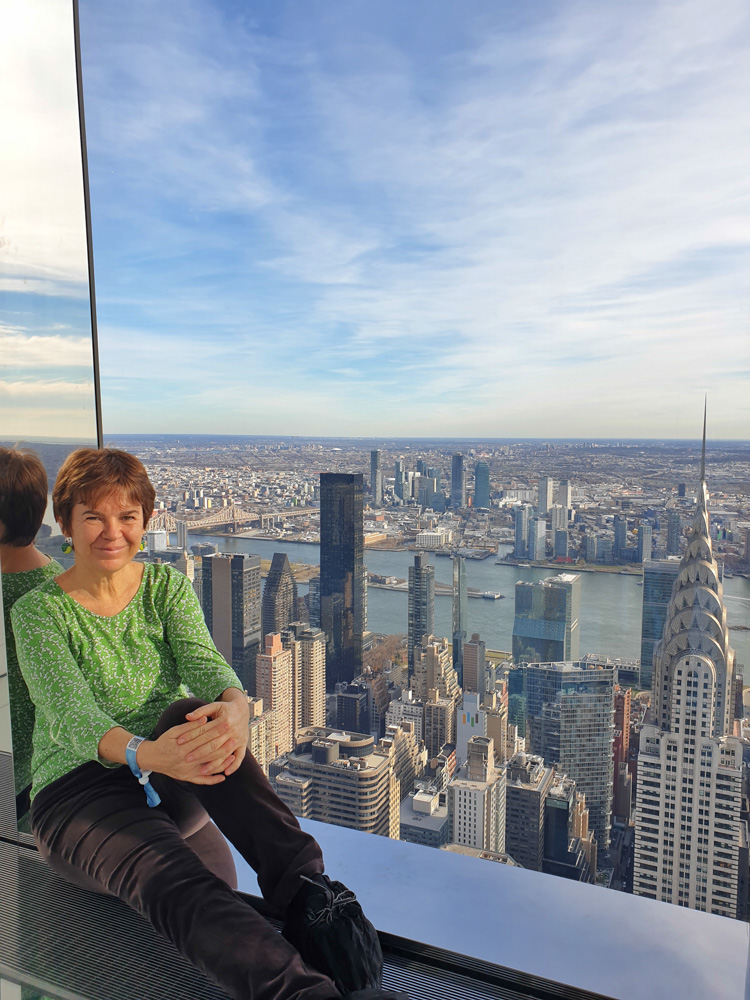
One of the prettiest bank buildings is at 110 E42nd Street, the one-time headquarters of Home Savings of America (earlier Bowery Saving Bank). Currently various offices and the Cipriani restaurant are renting spaces in this splendid building. In the building, suggestive of a Roman basilica, there is an arched entrance which leads into the original hall where the tellers’ counters were, with marble mosaic floor and high, beamed ceiling.
One of the best examples of Art Deco is the Chanin Building at 122 E42nd Street. The most marvellous part of the 200 metres tall building is the frieze running through the façade decorated with birds and fish.
Across, on the corner of 42nd Street and Lexington Avenue, stands the Chrysler Building from 1930. Chrysler, who founded his automotive enterprise in 1925, wanted a headquarters that would serve as a symbol of his company. According to his wishes, the stainless-steel art deco tower reminds us of a car’s cooler and the building is decorated with stylized cars, steering wheels, and radiator covers. Its architect, William Van Alen, was in competition with a colleague to see who would build a taller building. Alen secretly created a metal spiral in the fire shaft inside the building. When the competitor’s building (Bank of Manhattan) was ready on Wall Street and was taller than his, Alen pulled out the spiral which helped him to win the race. However, even with this he only had the glory for 11 months, after which, few blocks away, the Empire State Building took over. The Chrysler Building remained a favourite though, due to its original Art Deco style. The building is not only amazing from the outside, but the inside is also fantastic with its marble and granite entrance hall and unique elevator doors with wooden inlays. The building changed hands in the 50s but is assuredly keeping its name. There are no tours in the building but anyone can go into the entrance hall for free.
Another Art Deco classic is the Daily News Building (220 E42nd Street) which, as is common in the city, doesn’t belong to the company that gave its name any more but the name stuck. The Daily News was founded in 1919 and was the first tabloid style newspaper in the city. First it was not a success but later commuters grew fond of its convenient format. The paper put a lot of emphasis on pictures from the start, not a coincidence that its logo features a camera. Attention grabbing headlines, strong pictures, tabloid news, scandals, sport, comics – it was a harbinger of contemporary tabloids and was sometimes derisively called the “maids’ bible”. Even now it has the 4th largest circulation in the country. The paper was based in the building from 1929 to 1995, now a TV station operates here. In its entrance hall – which might be familiar from the Superman movies – is the world’s largest indoor globe. It was last updated in 1967 so it’s interesting to check it out, you can even find the GDR on it.
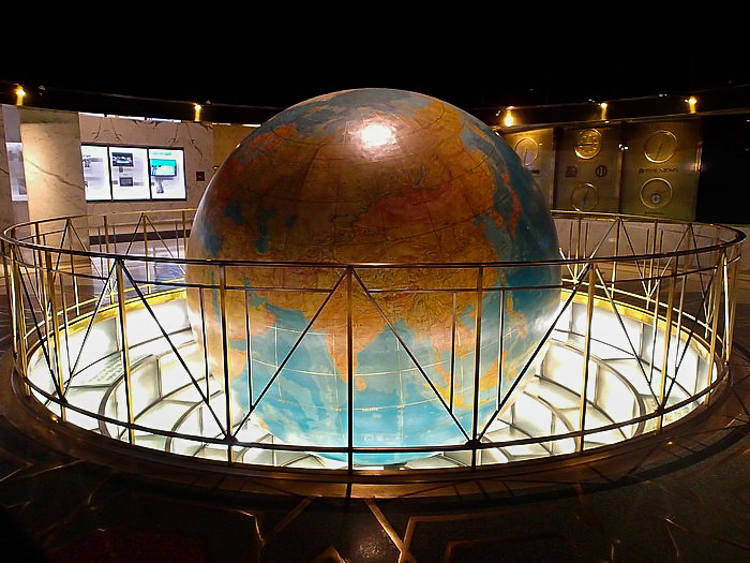

A great Japanese restaurant, the Sakagura, is hiding in its basement. It’s worth looking in at lunchtime when you try the daily lunch menu for a reasonable price. The black sesame crème brulee is heavenly!
The Ford Foundation Building is between 1st and 2nd Avenue. When it was finished in 1967 its huge atrium was the first in the city. There are more of them now but this remained the most beautiful: we can admire a tropical garden amongst granite columns where the plants are changed each season. From here the UN headquarters are a short walk away.
The fairly ugly UN headquarters are on 1st Avenue between 42nd and 48th Street. All member states’ flags are flying in front of the building and the small square also has a few sculptures given by various nations.
You register on the Internet in advance for guided tours in the building. With the uniformed guide, we can sit in the council chambers and look at the gifts from the member states. Although next to the Hungarian gift it says it was received in 1975, it was switched for sure – there is a photo of the parliament on the vase and it’s missing the red star and the coat of arms is not from that time.
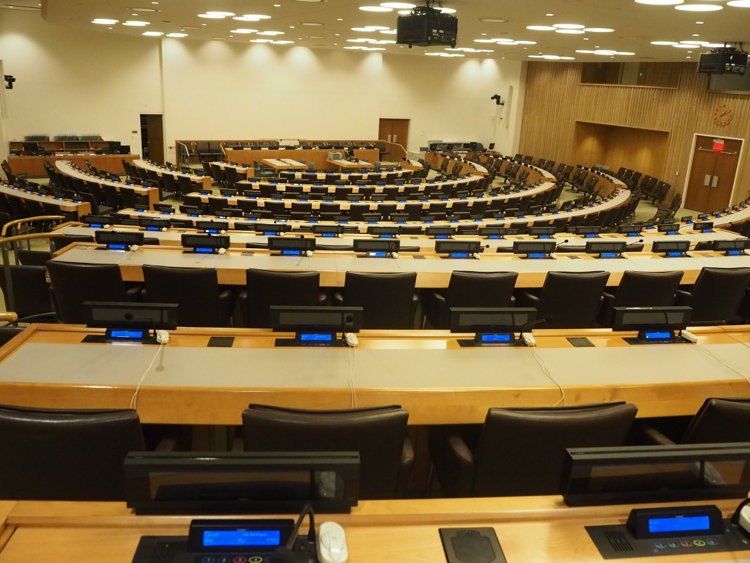
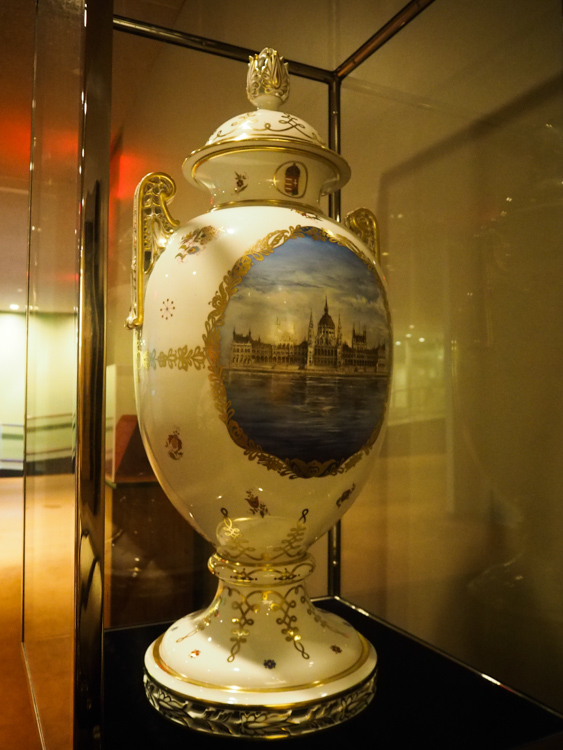
Fanatical stamp collectors shouldn’t miss the little post office where they can buy stamps stamped with a UN postmark – the area doesn’t belong to the US so it has its own stamp.
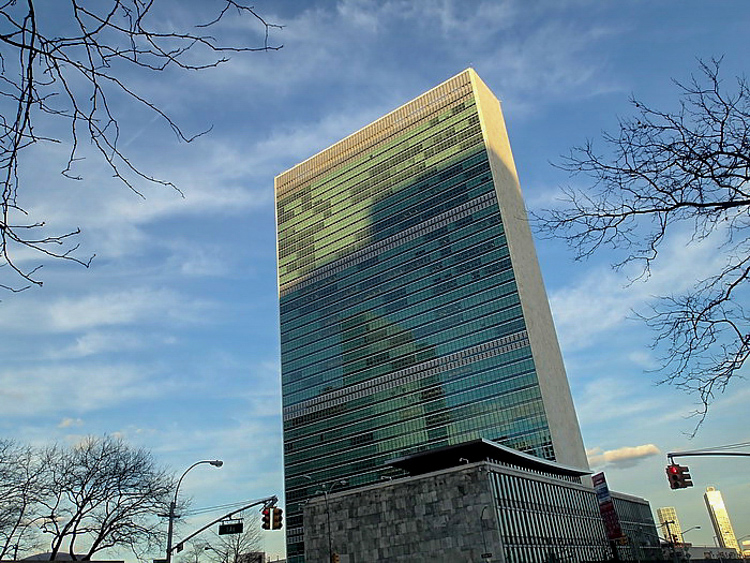
If you can fit in a large breakfast when you are in the area, then you could try the city’s best bagel place, Ess a Bagel (831 3rd Avenue, around 50th Street). I never ever miss it when I’m in New York. Bagels are a New York institution. And if bagel, then it’s the best here. Stepping into the small shop, the smell is already fantastic, never mind the taste. There are various bagels on offer: plain, onion, poppy seed, egg, raisin etc. and you can have these plain or with different cream cheeses. My favourite is the onion bagel with walnut-raisin cream cheese. In the morning, a long American coffee and a large bagel will give enough energy for day long sightseeing.
Let’s walk from here to Park Avenue with its fancy hotels and huge skyscrapers. The height of elegance is the Waldorf Astoria Hotel (301 Park Avenue, between 49th and 50th Street) where even though we cannot look at the rooms, the restroom off the entrance hall is worth a visit. At least we can walk on the red carpet where numerous heads of state and other celebrities tread before us.
(currently under renovation)
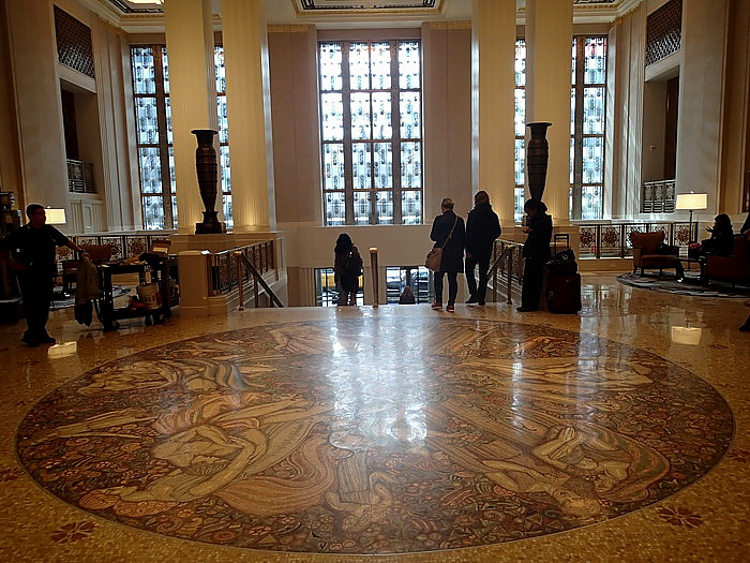
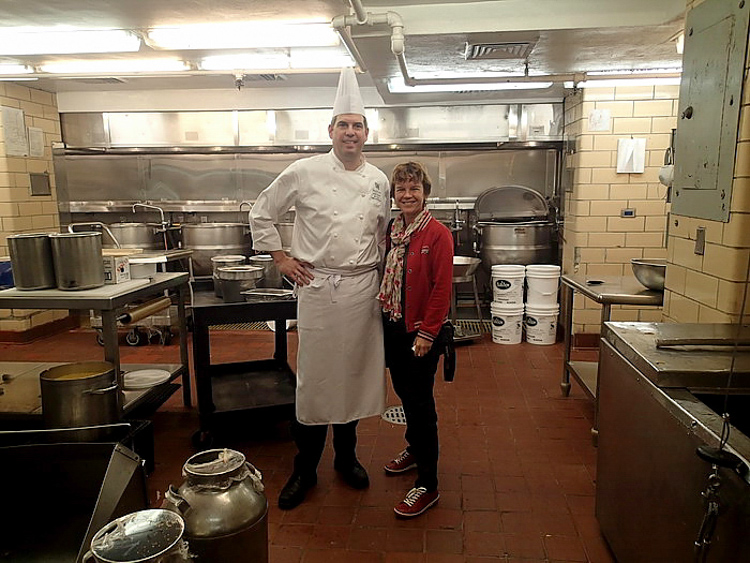
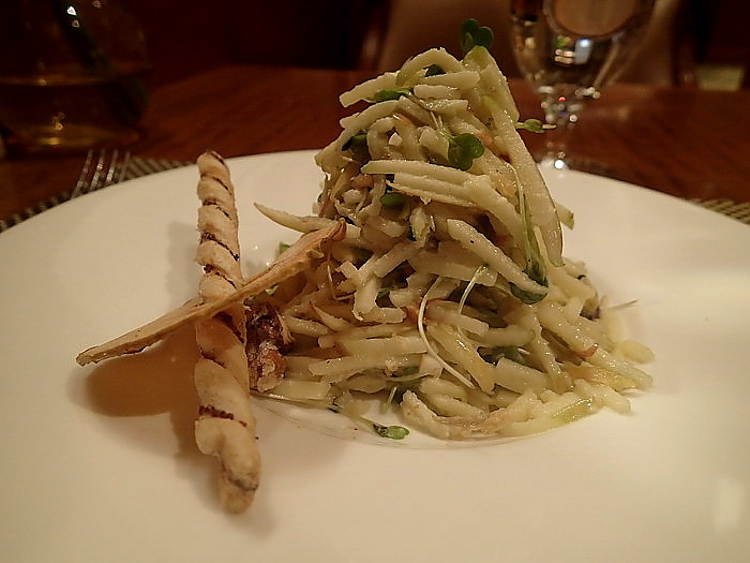
Further on Park Avenue (between 52nd and 53rd Street) is the Seagram Building which opened a new chapter in skyscraper architecture. One of my favourite architects, Ludwig Mies van Rohe, designed it. He left a small square in front of the concrete behemoth where he installed two fountains which made it more intimate. Others later copied this design.
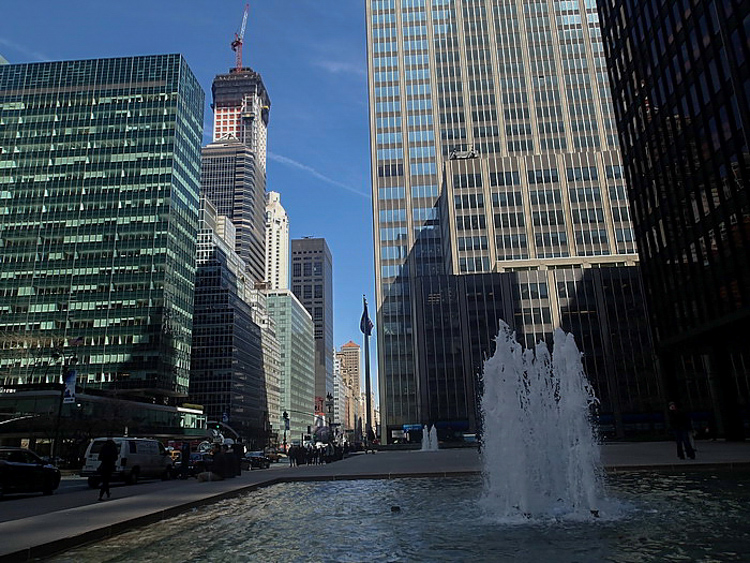
One block east, on the corner of 53rd Street and Lexington Avenue, stands the Citicorp Center which is the prettiest at sunset. The tiny Saint Peter’s Church, which is under the building, has very modern design and atmosphere. We can listen to masses with a unique feel, for example, one mixed with a jazz concert, and the church also provides space for avant-garde theatre shows.
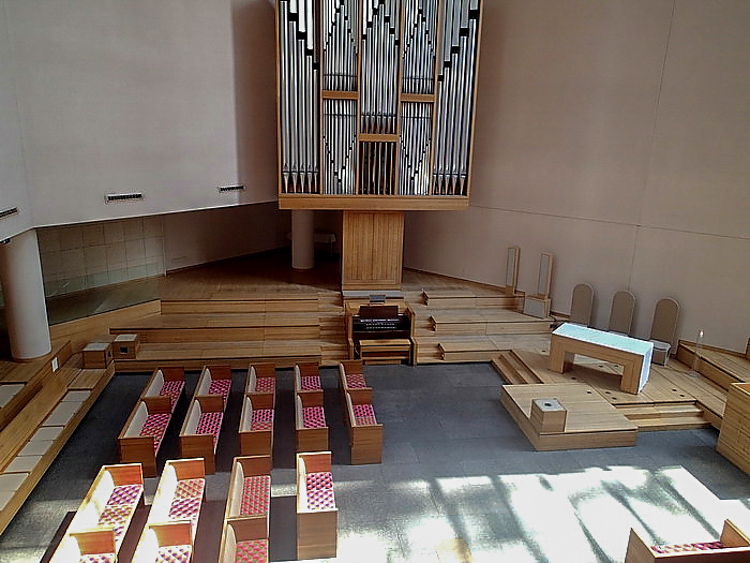
The Moorish-style Central Synagogue is at 652 Lexington.
Moving on towards north, we’ll find the AT&T Building (Madison Avenue, between 55th and 56th Street) which is currently used by Sony. There is a small museum inside, the Sony Wonder, which can mainly be enjoyed by children or the lovers of technology. One block further, on the other side of Madison Avenue is the green granite building of IBM. We can take a break in its entrance hall under the shade of bamboo trees.
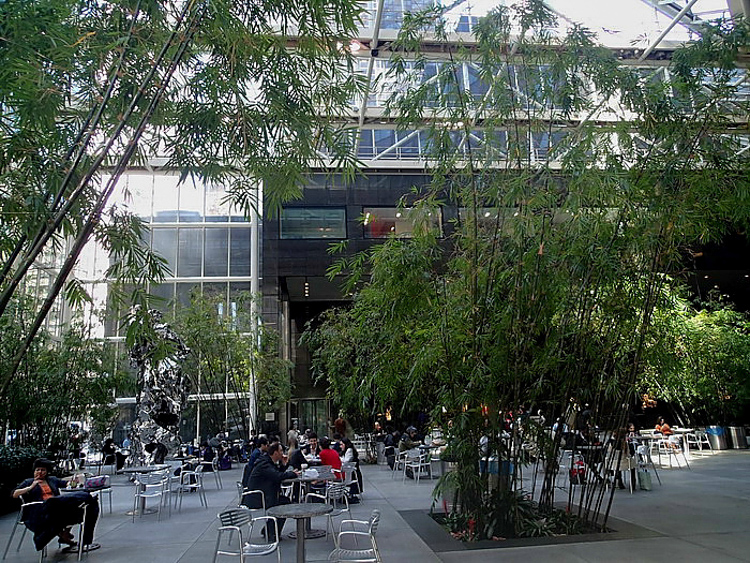
There is a lovely hidden little garden, Paley Park, on 53rd Street, between Madison and 5th Avenue.
The Rockefeller Center is between 5th and 6th Avenue and 48th/52st Street and is an artistically designed business quarter. It was built between 1932 and 1940 by John D. Rockefeller, the son of the famous oil magnate.
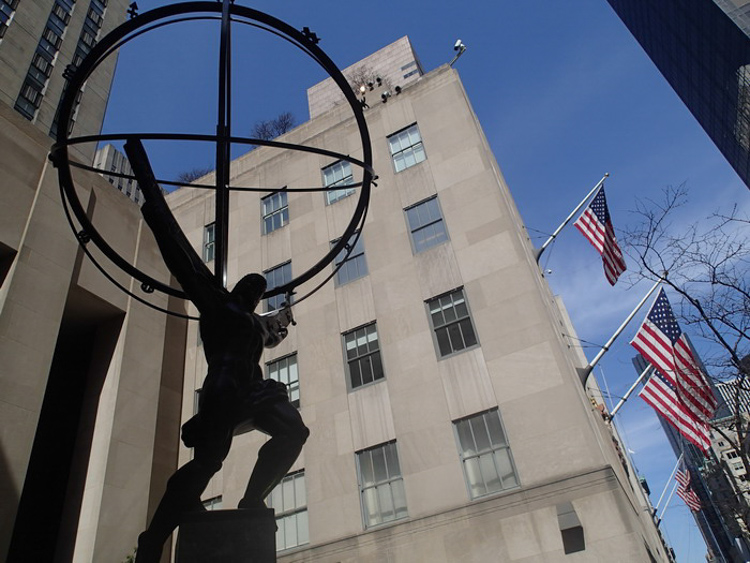
The complex is an excellent example of well thought out and well implemented city planning. There are theatres, cinemas, cafes, little shops, schools and parks among the imperious skyscrapers. We can find Tower Plaza with its golden Prometheus statue, well known from postcards, on 5th Avenue between 49th and 50th Street. There is an expensive café in the summers and a small skating ring with delightful vibe in winters.
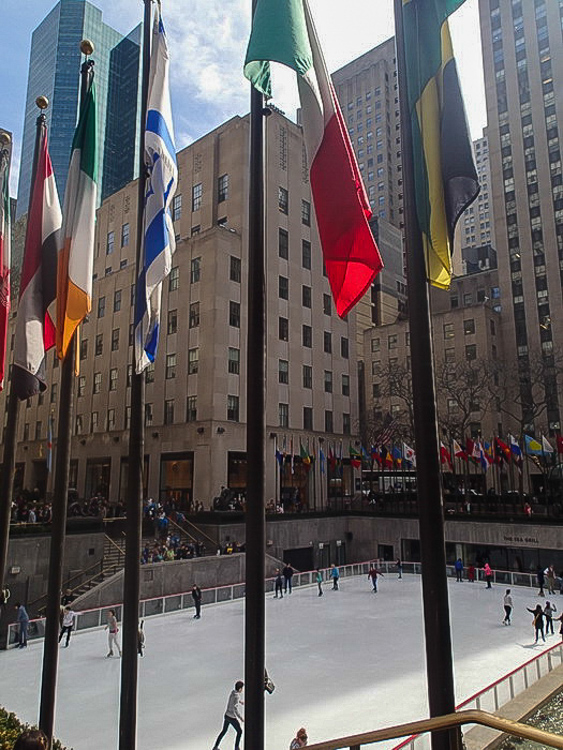
The city’s Christmas tree is erected here with much ado. New York is always beautifully decorated at Christmas time but the highlight is setting up the tree. The whole city comes to look at it so we shouldn’t leave it out either. The flags of the UN states are flying around the square and on the west side is the towering General Electric Building which originally gave home to the RCA (Radio Corporation of America). One of the city’s fancy restaurants, the Rainbow Room, is on the 65th floor where we can dine while admiring the best view (currently closed – check the homepage). There is a view point on top of the building (Top of the Rock) where the view rivals the Empire State Building’s. The entrance to the viewing platform is on 50th Street, between 5th and 6th Avenue.
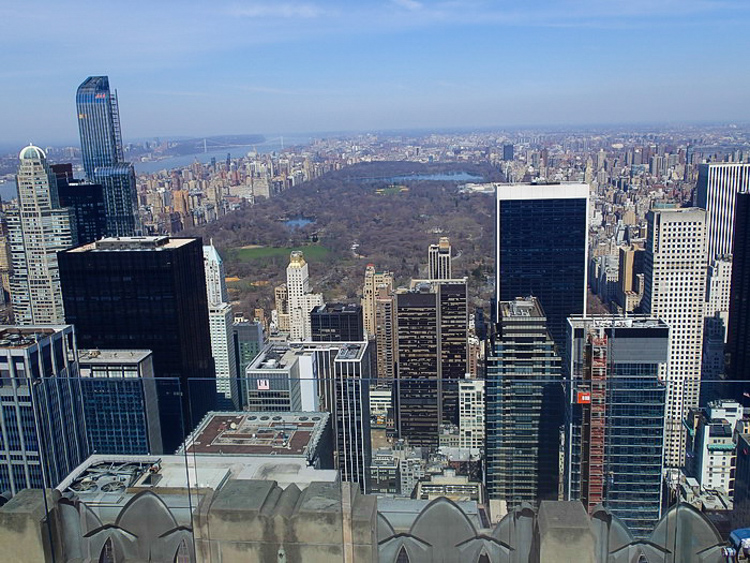
The headquarters of NBC is on the corner of the square. We can look into the glass-walled studio on the ground floor from the street, even during filming. The Radio City Music Hall stands on the corner of 6th Avenue and 51st Street. Sometimes you can catch an interesting concert here, but it’s mostly putting up dancing variety shows to lighten the tourists’ pockets.
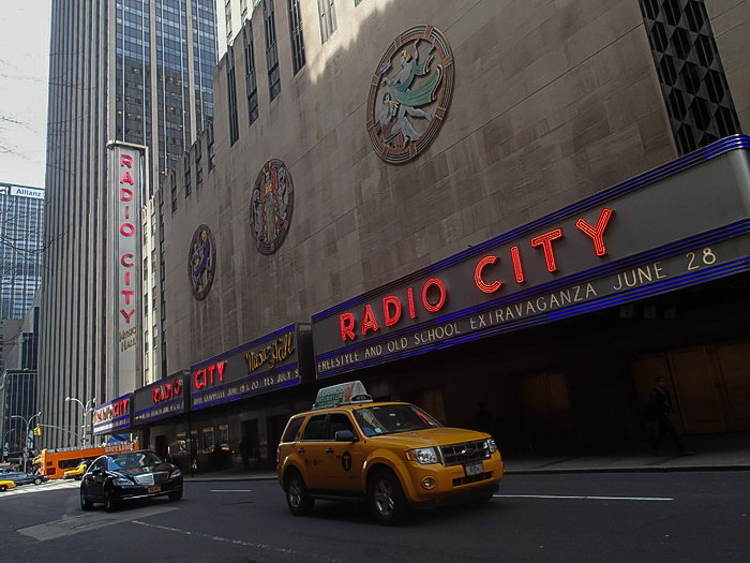
If you are here during lunch or dinner time, I can suggest one of my favourite Japanese restaurants, the Sapporo West at 152 W49th Street, between 6th and 7th Avenue. Huge bowls of soup and fantastic teriyaki chicken for low prices, a few steps from Times Square, every day from 11am to 11pm. The soups are made in three flavours: salty, soy or miso, I think the latter is the best. I come here on my every New York trip and also the French toast is unmissable at Majestic Deli at 200 W50th Street (7th Avenue).
The area’s leading museum is the Museum of Modern Art (53rd Street, between 5th and 6th Avenue). We can thank the world’s best contemporary art collection to the fact that the Metropolitan Museum didn’t want to deal with 20th century art. So MOMA was kind of created as an opposite to the Metropolitan in 1929, just 10 days after the collapse of the stock exchange. In 2004 it moved to a new, larger building. Every big name can be found here – just a few examples: Cezanne, Van Gogh, Rousseau, Picasso, Monet, Chagall, Kandinsky, Mondrian, Matisse, Paul Klee, Dali or Magritte.
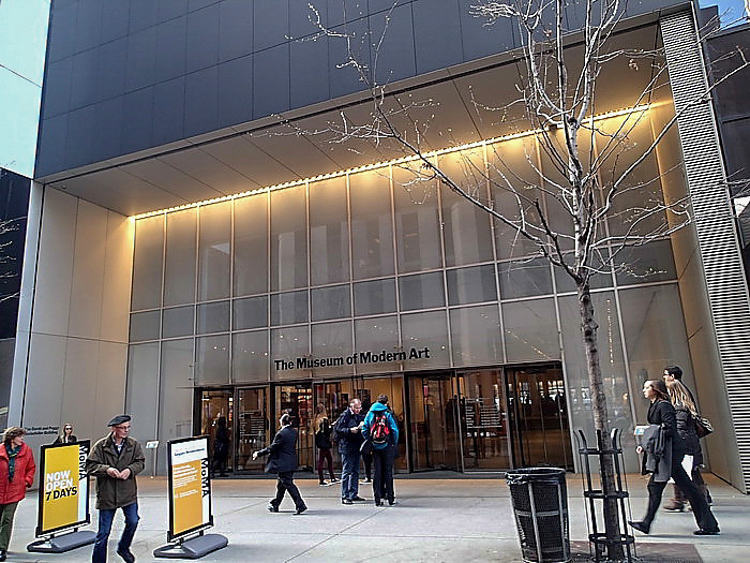

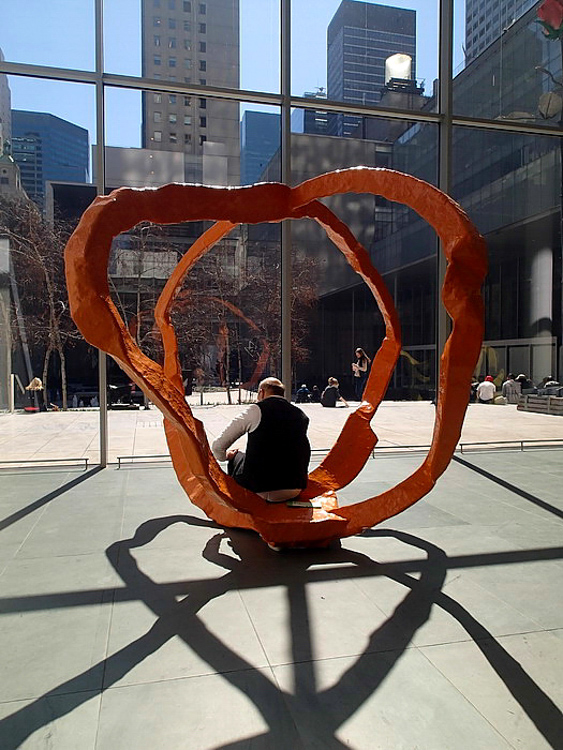
In its three theatre halls, there are old movie screenings, a rare place in New York that they don’t show the new Hollywood blockbusters. MOMA was the first museum in the world which recognized film as an art form and documented its evolution. They have serious collections dedicated to photo history and architecture which are close to my heart. It’s worth asking at the information desk whether there is a show, film or concert going on because these are often very interesting. I was lucky to be at a lecture given by Roy DeCarava, a photo artist, where I learnt more about photography than from a dozen books. The hall was packed, it was as hard to get in as to a rock concert. The African-American photographer, who mainly takes pictures of everyday Harlem and jazz musicians, talked informally about his work and patiently answered questions until closing time. He only finished when the museum attendants hurried him to end it, and even after he stayed on to sign his newly published book.
There are loads of food carts in New York and one of the best, Halal Guys, is nearby (corner of 6th Avenue and 53rd Street).
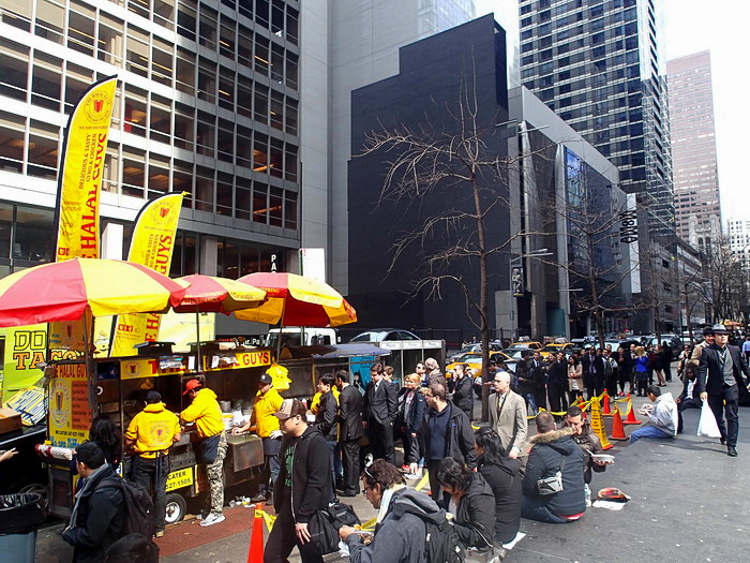
After so much sightseeing it’s time for some leisure time. Let’s walk along 5th Avenue between 49th and 59th Street where we can check out the city’s most expensive stores. This part of 5th Avenue equals luxury. For three decades starting in the 1830s the richest families lived in this area, like the Astors and Vanderbilts. William Henry Vanderbilt built his mansion in 1833 on the corner of 5th Avenue and 51st Street, starting a new fashion: rich families built their homes one after the other on the avenue up until Central Park. Later, the high society moved towards north. According to legend, one millionaire, Morton F. Plant, sold his house for a double strand pearl necklace to the jeweller, Pierre Cartier, whose business is still open at its original location at 651 5th Avenue. That’s one of the few remaining mansions.
Step into the Abercrombie store for a minute (corner of 56th Street and 5th Avenue) – it smells really nice J
Fortunoff is in the next block, then Gucci, Bijan and Godiva are between 54th and 55th Street. Trump Tower is on the corner of 56th Street. It’s definitely worth looking at the trees planted on the terrace and inside the 5-story waterfall over the marble wall. Beside Qatar Airways, Bruce Willis, Beyonce and Janet Jackson have apartments here, amongst others.
From here it’s only a few steps to reach my favourite jewellery shop, Tiffany on the corner of 57th Street. I would also like to call attention to the store’s small but very elegant window displays. The store was immortalized in Truman Capote’s 1958 novella, Breakfast at Tiffany’s.
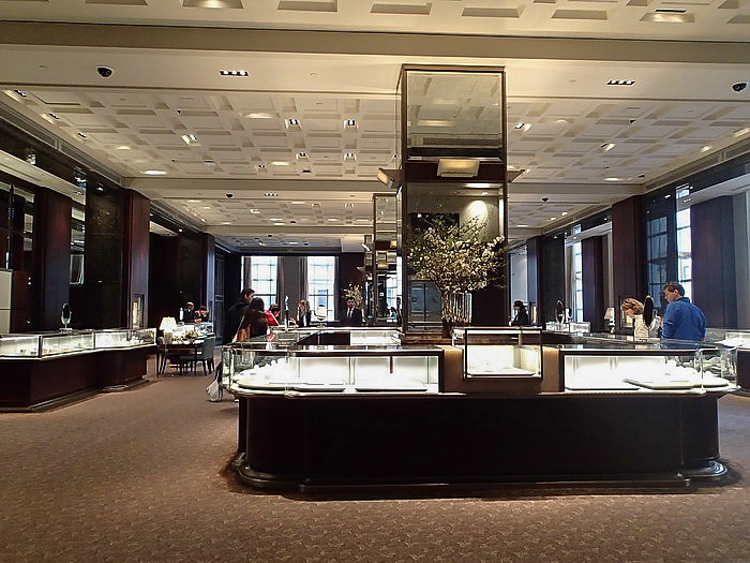
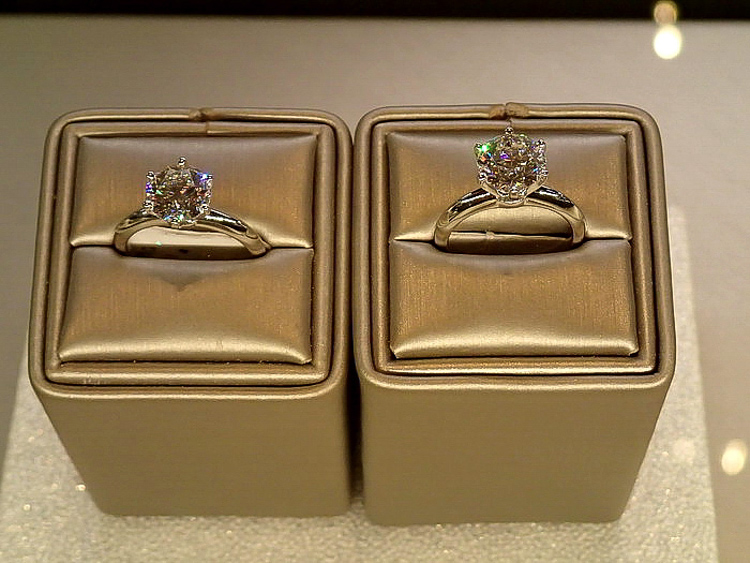
If you love diamonds, then you must visit Diamond Row on 47th Street, between 5th and 6th Avenue: here all the shops sell gold and diamond. The selection is unbelievable. 80% of the country’s wholesale diamond business is conducted on this 250-metre stretch. The business owners are orthodox Jews whom you can easily recognize from their dark coats, hats and the ringlets, done by curlers, peeking out from under the hats. Interestingly you can only spot them on the street, as they hurry to places, they are not serving in the shops. The diamond district was created in the 1930s when the diamond cutters of Antwerp and Amsterdam fled the Nazis. It’s mainly a wholesale center but they do serve individual customers.
When we had enough of the sparklers, we can get back to 5th Avenue and chose a few accessories in the Chanel boutique, across Tiffany’s. Then let’s relax in the full-on marble, glass and gold Plaza Hotel where lots of famous guests stayed such as the Beatles. Even if we won’t make use of the presidential suite, we can use the downstairs luxury restroom for free.

